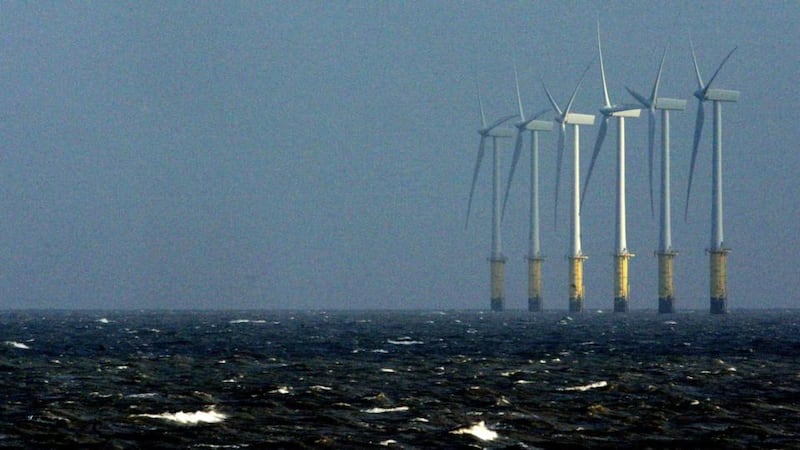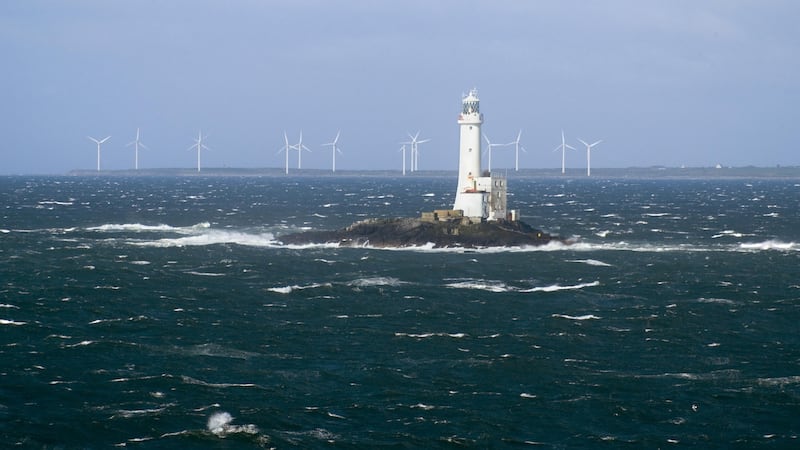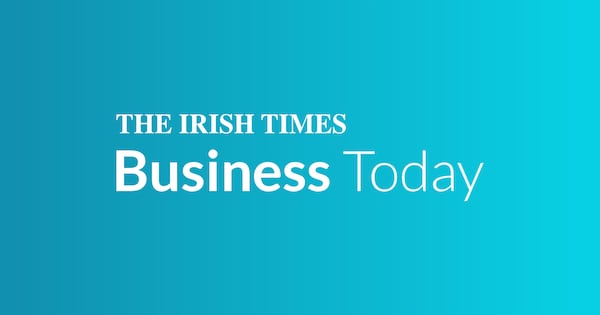The global offshore wind energy sector is in the doldrums due to hostility from Donald Trump; supply chain bottlenecks, planning uncertainties, and high costs.
The North Sea boasts of having the best wind speeds in the world – averaging 9 metres per second – and yet following the German government offer of two prime sites off its coastline recently, not one developer bid for a contract. Ireland has even better wind speeds from the Atlantic but it has not built an offshore wind farm in 20 years.
The world market for offshore renewable energy (ORE) has soured in less than 18 months. Trump’s scuppering of fully financed and permitted offshore wind farms has undermined mood music but higher interest rates, a row-back on net-zero ambitions, and energy companies weakening or abandoning decarbonisation commitments and doubling down on fossil fuels have all played a part.
Some 24 gigawatts (GW) of offshore wind capacity and offtake agreements were cancelled since 2023, according to energy analysts Wood Mackenzie. Just 1GW powers the equivalent of 1 million homes.
READ MORE
Last June, the Norwegian company Statkraft announced it is to stop further activities in new offshore wind projects, including floating wind, but will continue developing the 500MW North Irish Sea Array (NISA) in the Irish Sea.
Statkraft’s senior vice-president and managing director for Ireland and UK, Kevin O’Donovan, is well placed to outline why, despite the dismal global picture, Ireland is well placed to scale up its ORE. He provided that perspective at a recent National Economic and Social Council (Nesc) conference. It was a frank assessment layered with realistic optimism by prioritising ways forward.

Firstly, O’Donovan wants to underline progress made in Ireland over the past 25 years, with wind technology efficiency increasing by a factor of 20.
He recalls how, two decades ago, ESB National Grid (a forerunner to EirGrid) said that Ireland would never have more than 300-500MW of wind energy on our grid system. Any more and the system would break down.
“[Today] we have over 5,000 megawatts of wind on our system, and heading for two gigawatts of solar,” O’Donovan adds.
He was impressed by Minister for Energy Darragh O’Brien’s “positive vision for where we need to go”, with emphasis on delivery. The industry needs to “show people we can deliver on what needs to be achieved over the next decade and the technology is, for me, the way we will achieve that”.
Ireland stands out in Europe as a good market for renewables, with clear policy and plans backed by strong political consensus. We have had significant success but sometimes “get a little bit too focused on targets and the timing of those targets and on the net zero discussion”.
Statkraft is Europe’s largest producer and trader of renewables, yet even it would say “we can’t fully tell you right now how we’re going to get to net zero ... it would be far better focusing on we actually have the technologies right now to deliver 80 per cent of all our electricity [from renewables] by 2030 to 2031 or 2032, maybe”.
That amounts to huge electrification of Irish transport and heating sectors using wind and solar, the cheapest renewables – “and basically electrifying our economy”. This requires focus on delivery, recognising “every megawatt hour we get on the system, year-on-year for this next decade, is going to put us in a better position”.

O’Donovan does not want to moan given significant progress but challenges needed to be overcome. Reforms to the Planning Act took too long and implementation could be another year. “We have very good aspirations and very good plans. It’s the implementation and the fast implementations where we fall down.”
Statkraft is one of the four projects with Offshore Renewable Electricity Support Scheme (ORESS) contracts. It was in a position to easily complete it by 2030. It submitted its bid two years ago, assuming planning would be secured within 12 months. “Today, we are 16 months and counting since we submitted our planning application,” he says.
Statkraft had to print out 10,000 pages per application and submit up to 20 copies, which required hiring a van. “That alone shows where we need to start getting more efficient. For goodness sake, just digitise the thing. Every other country is doing that.”
More frustration followed, waiting nine months for An Bord Pleanála (now An Coimisiún Pleanála) to issue a “further information request”.
“What was issued is something that requires years of further surveys, millions of euros of further investment before we could even respond to all of the requests,” he says.
Statkraft then spent seven months waiting for the commission to have a meeting with it, to explain that it had provided much of the required information.
It will probably be mid-2027 before planning is granted. The Minister hoped turbines would be in the water by 2030 but “if we can’t have faster decision-making time, then that won’t happen”, O’Donovan says.
Government Ministers had spoken about the importance of private wires bypassing the grid but a 200-page-plus consultation document since might mean it is years away.
Likewise, O’Donovan fears hybridisation of projects, which maximise energy output from a single site and allow for more strategic grid usage and energy trading, face a similar timeframe, and the North-South Interconnector will not get done anytime soon.
He was impressed by the British government setting up what it calls “mission control” to deliver projects. It was similar to the clearing house announced by the Taoiseach, though O’Donovan favours a broader remit where senior politicians and the Government bring all departments and stakeholders together to get things get done.
“There’s a collective responsibility on all of us ... to realise we’re going to need infrastructure that we may not particularly like and collective good is something that’s going to have to really drive our decisions going forward on how we deliver that infrastructure.”
The transition “will give us energy security. It will eventually reduce our electricity bills, and it will give us a stable, resilient power system that in time we can export.”
Perhaps the most damning finding in recent Nesc reports on the energy transition is its warning we are heading into strategic fog, where visibility and certainty are low.
For Val Cummins, chief impact officer of Simply Blue Energy in Cork, this is “a bold but fair statement”.
“Despite global headwinds, you could argue the fog is beginning to lift – thanks to the Taoiseach’s clearing house on offshore wind and the upcoming 900MW Tonn Nua [a site off the south coast] auction,“ she says.
Policy choices made in the term of this Government will shape our economic future for decades to come, Cummins adds. “We need bold, joined-up action across energy planning and industrial policy – to deliver an integrated offshore wind action plan.”
Focus should shift away from unachievable targets, she says. “Set out the level of renewable power we should aim to generate by 2040 and 2050, taking environmental, social and economic objectives on board.”
This means, Cummins says, taking a systems approach to determine the optimal national energy trajectory, comparing business-as-usual with renewable transition pathways, and integrating ecological economics to reflect the true environmental and social costs of energy choices.
“Determine who pays for electricity from offshore wind and how, with a fundamental objective around achieving more affordable electricity for all,” she says.
“Co-ownership can ensure a return on investment for the State, but importantly, it can also help to facilitate citizen buy-in.”
On supply, delivering the national DMAP (the Designated Maritime Area Plan for Offshore Renewable Energy) by 2027 is essential, to identify priority sites for development. The next iteration of marine spatial plans for offshore wind development zones must be integrated with demand (grid and private wires) and port capacity.
“In parallel with spatial planning, put a focus on cost reduction pathways to ensure we optimise the conversion of our abundant supply of offshore wind,” Cummins says.
When it comes to demand, Cummins adds: “To misquote Bill Clinton, ‘it’s the market, stupid.’ Address the elephant in the room by making sure the next phase of Powering Prosperity, Ireland’s industrial plan for offshore wind, outlines a clear route to market to meet domestic demand for decarbonisation, to generate demand/attract large energy users for our industrial growth, and ultimately to produce competitively priced energy for export.”
Upfront exchequer funding is required to support infrastructure development and the forthcoming national ports policy needs “a 21st century model for financing them”.
Critically, innovation will be needed to develop offshore sites that yield the cheapest electricity first.
“However, ignore the need to invest in floating offshore wind at our peril. There simply won’t be enough space for fixed-bottom projects ... super saturation of the Irish Sea will wear thin with some stakeholders, especially environmentalists.”
Floating technology provides access to deeper waters, while also providing upsides such as greater supply chain benefits and regional development. The Government should commit to kick-starting two scalable 400MW floating demonstration projects via competitive marine area consents in 2028.
Having the right expertise on board is paramount, she says.
To optimise expertise and resources, a single agency should deliver an integrated plan, Cummins says. “Planning for ‘what next’ will be most effective if we move away from the silos and confusion of governance around the energy transition, especially deployment of offshore wind.”
The Trump administration has caused huge damage to the sector, says Noel Cunniffe, chief executive of Wind Energy Ireland.
ORE is a global business with developers active across the US, EU and Irish markets while a lot of capital has been eroded in America. While supply chain pressure may ease, international sentiment has become risk averse, leading to less money being available in Europe.
“Ireland needs to be better than every other country in Europe in attracting that money,” Cunniffe says.
There is a sense that a strong market exists in Ireland with good auctions and robust rules compared to elsewhere. Auctions in Denmark, France and the Netherlands recently failed to attract bids.
Political stability is a big positive, with all major parties supporting ORE. “You can’t say that about other countries,” Cunniffe says, pointing to Reform in the UK and far-right factions in France, Germany and eastern Europe closely aligned with anti-renewables campaigns.
He expects that positive sentiment will be reflected in support for the Tonn Nua auction outcome in the coming weeks.
A common view emerges among stakeholders: The future of the offshore wind industry hinges on the extent to which governments, utilities and corporate customers support the higher costs before the bounty of clean, affordable electricity emerges. That commitment would provide the industry [and supply chains] with certainty needed to invest – and reset the course to match ambitious renewable targets that were up in lights less than two years ago.
As Nesc has laid out, Cummins says, “we must deliver now, and plan for ‘next’ and ‘later’, moving to potential surplus and export of clean energy. The fog can clear – but only with co-ordinated, confident action.”
[ Mary Robinson says Cop30 summit must signpost stronger action on fossil fuelsOpens in new window ]














